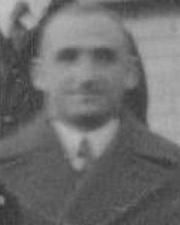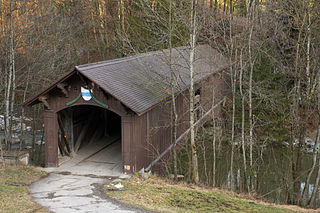
August Ferdinand Möbius was a German mathematician and theoretical astronomer.

Minnesang was a tradition of lyric- and song-writing in Germany that flourished in the Middle High German period. This period of medieval German literature began in the 12th century and continued into the 14th. People who wrote and performed Minnesang were known as Minnesänger, and a single song was called a Minnelied.
Michael Bernays was born in Hamburg. He studied first law and then literature at Bonn and Heidelberg.
In Balkans folklore, a dhampir is a creature that is the result of a union between a vampire and a human. This union was usually between male vampires and female humans, with stories of female vampires mating with male humans being rare.
The term Stift is derived from the verb stiften and originally meant a donation. Such donations usually comprised earning assets, originally landed estates with serfs defraying dues or with vassal tenants of noble rank providing military services and forwarding dues collected from serfs. In modern times the earning assets could also be financial assets donated to form a fund to maintain an endowment, especially a charitable foundation. When landed estates, donated as a Stift to maintain the college of a monastery, the chapter of a collegiate church or the cathedral chapter of a diocese, formed a territory enjoying the status of an imperial state within the Holy Roman Empire then the term Stift often also denotes the territory itself. In order to specify this territorial meaning the term Stift is then composed with the compound "hoch" as Hochstift, denoting a prince-bishopric, or Erzstift for a prince-archbishopric.

Dietmar von Aist was a Minnesinger from a baronial family in the Duchy of Austria, whose work is representative of the lyric poetry in the Danube region.

Friedrich Wilhelm Daniel Levi was a German mathematician known for his work in abstract algebra, especially torsion-free abelian groups. He also worked in geometry, topology, set theory, and analysis.

Hirzel is a former municipality in the district of Horgen in the canton of Zürich in Switzerland. On 1 January 2018 the former municipality of Hirzel merged into the municipality of Horgen.

Friedrich von Hausen was a mediaeval German poet, one of the earliest of the Minnesingers; born some time between 1150–60; d. 6 May 1190.

Bernhard Hirzel was a Swiss theologian and Orientalist.
Ludwig Hirzel was a Swiss theologian born in Zürich. His son, also named Ludwig Hirzel (1838-1897), was a noted literary historian.
Ludwig Hirzel was a Swiss literary historian born in Zürich. His father, also named Ludwig Hirzel (1801–1841) was a professor of theology at the University of Zürich.

Sihlbrugg is a village and important transportation node between the cantons of Zug (ZG) and Zürich (ZH) in Switzerland.

In the Holy Roman Empire, the German term Hochstift referred to the territory ruled by a bishop as a prince, as opposed to his diocese, generally much larger and over which he exercised only spiritual authority. The terms prince-bishopric and ecclesiastical principality are synonymous with Hochstift. Erzstift and Kurerzstift referred respectively to the territory ruled by a prince-archbishop and an elector-archbishop while Stift referred to the territory ruled by an imperial abbot or abbess, or a princely abbot or abbess. Stift was also often used to refer to any type of ecclesiastical principality.

August Friedrich Oelenhainz was a German painter.
Hans Falkenhagen was a German physicist and electrochemist best known for eponymous Debye–Falkenhagen effect.

Hans Caspar Hirzel, also known or spelt as - Herzil John Caspar, Kaspar Hirzel, Johann Kasper Herzel, or John Kaspar Hirzel -, was an eminent Swiss physician and writer on rural economy.
Andreas Hirzel is a Swiss footballer who plays as a goalkeeper with FC Vaduz.
Rudolph "Rudy" Frederick Schaeffer an American artist connected to the Arts and Crafts movement and arts educator. Founder of the Rudolph Schaeffer School of Design, a school that was based in San Francisco and produced designers, architects, interior decorators, teachers and colorists for more than 50 years.
Susanne Zeller, née Hirzel, was a member of the resistance group "White Rose", for which she was arrested and convicted, but avoided the death penalty.














